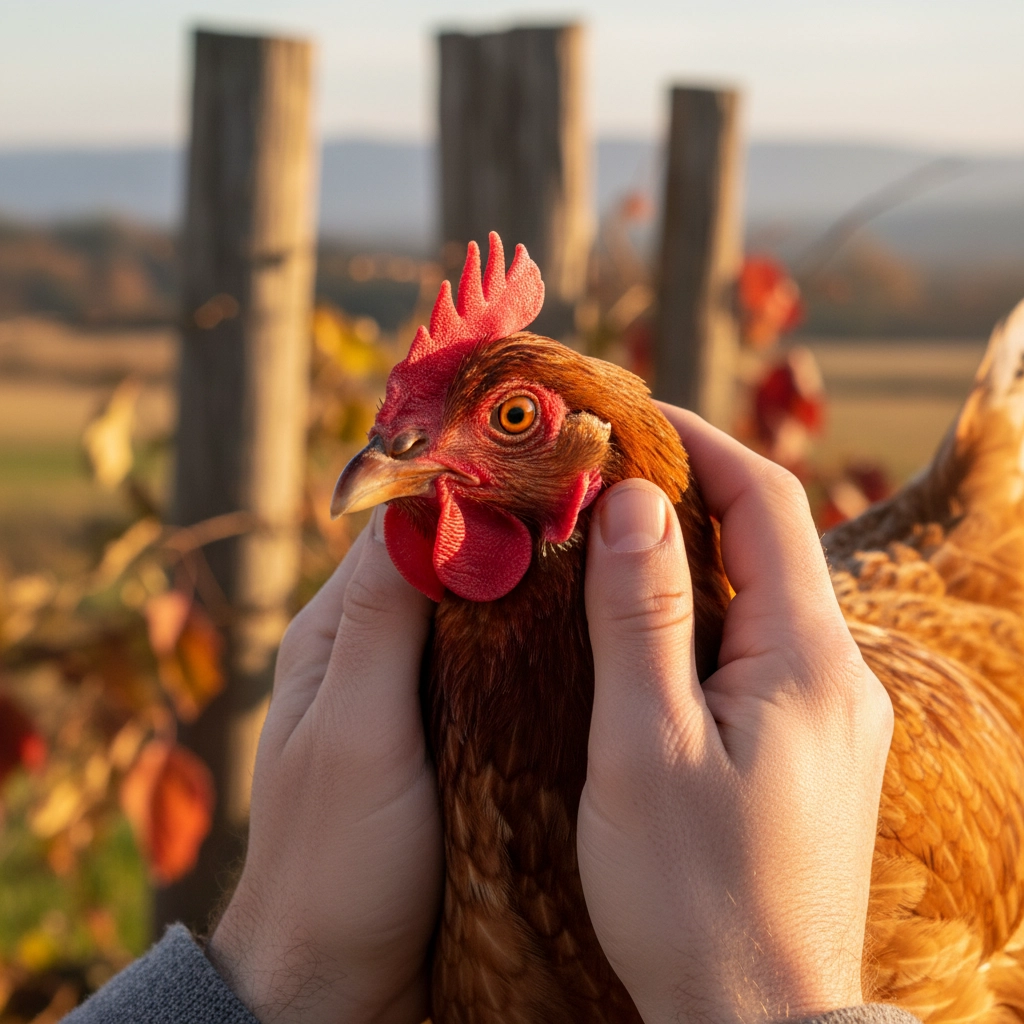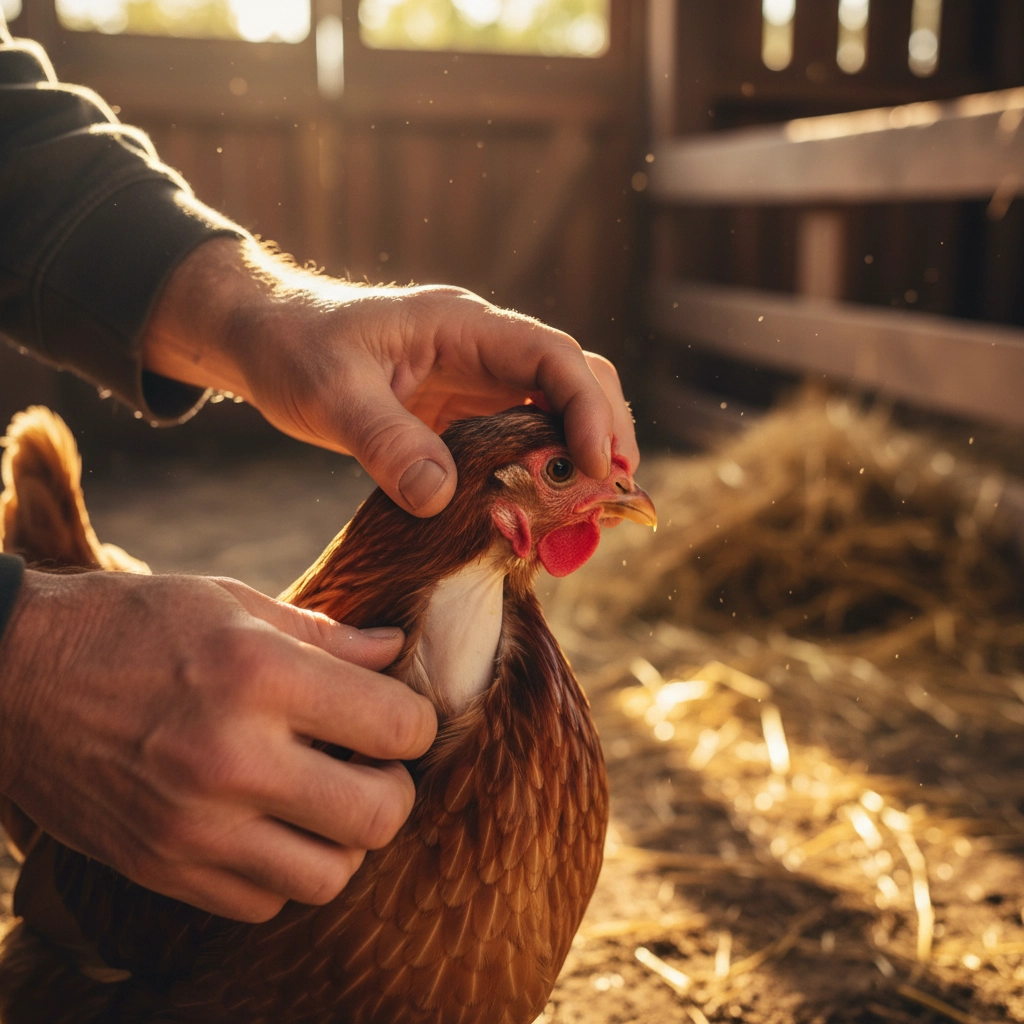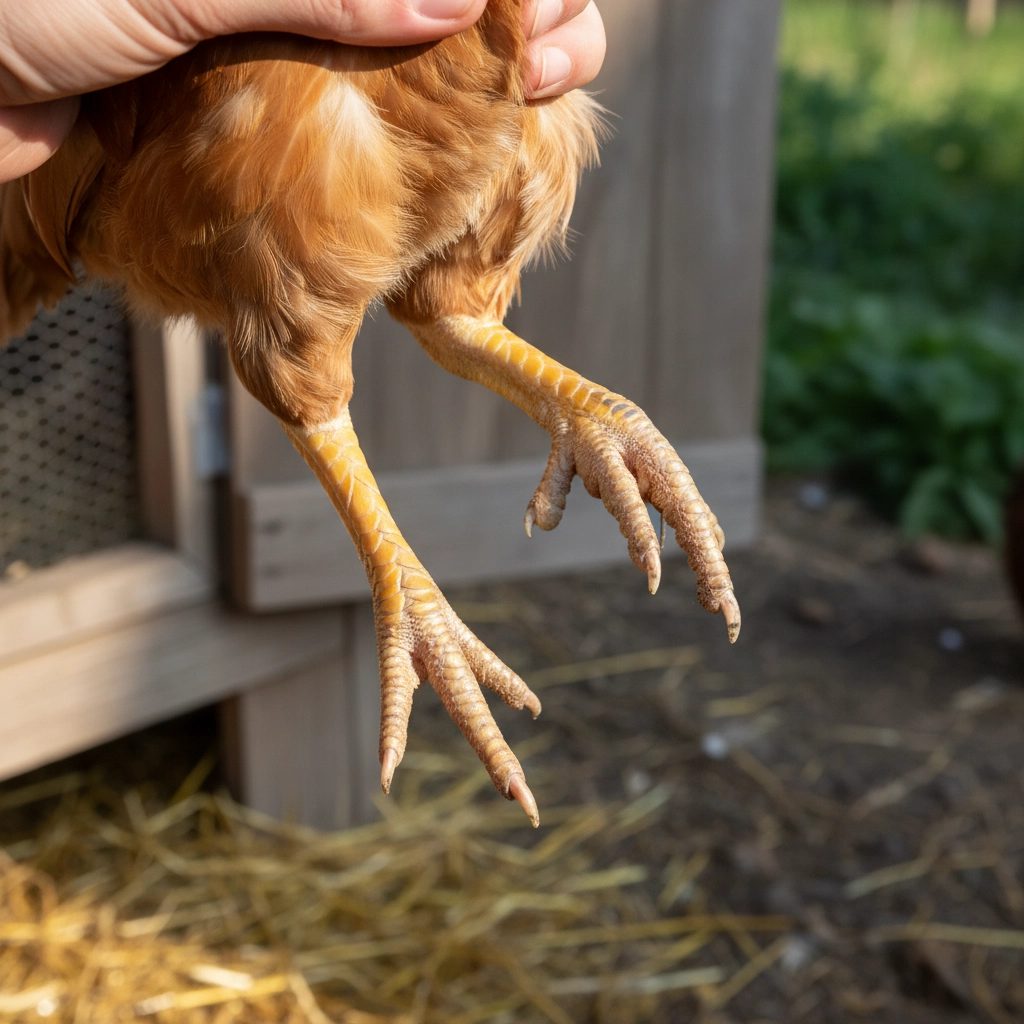As days get shorter and the weather cools, your feathered friends need extra attention to stay healthy and happy. 🍂 Just like we layer up and boost our immune systems for winter, your chickens need some extra TLC too!
Cool, damp weather can stress your birds and make them more vulnerable to various health issues. That's why conducting regular health checks becomes absolutely essential for their wellbeing during this transitional season. Think of it as your autumn flock MOT – catching small problems early means you can sort them out before they become bigger headaches.
Starting With the Basics: Head-to-Toe Physical Checks 🐔
When you're doing your autumn health rounds, begin with a thorough visual inspection of each bird. Your chickens' eyes should be bright and clear – no cloudiness, discharge, or swelling. Healthy eyes are like little windows into their overall wellbeing, so any changes here are worth noting.
Check their nostrils too – they should be clean and free from any blockages or unusual discharge. During cooler weather, respiratory issues become more common, so keeping an eye on these areas is particularly important.
The combs and wattles tell you loads about your birds' health. They should look vibrant and smooth rather than pale or discoloured. A pale comb can indicate internal parasites or other health concerns that need addressing. If you notice any significant colour changes, it's worth investigating further.

Feather Condition and Body Assessment
Your chickens' plumage is like their winter coat, so it needs to be in tip-top condition as temperatures drop. Healthy feathers should be glossy and well-maintained – dull, ruffled, or missing feathers often signal underlying health issues or stress.
During your examination, gently feel along the keel bone (breastbone) to assess body condition. This might feel a bit odd at first, but it's one of the most reliable ways to check if your birds are maintaining a healthy weight. The keel should feel somewhat padded rather than prominent – if it feels particularly bony or sharp, your chicken might be losing weight and need some extra nutrition.
Respiratory Health: Listen Carefully 👂
Autumn's damp, cool conditions create the perfect storm for respiratory problems. While you're handling each bird, listen for any unusual sounds like sneezing, wheezing, rattling, or coughing. These can be signs of chronic respiratory disease or infectious bronchitis – both conditions that need prompt attention.
Drafts, dampness, and fluctuating temperatures are the main culprits here, so if you're hearing respiratory symptoms, it might be time to review your coop ventilation and weatherproofing too. Good airflow without direct drafts is the sweet spot you're aiming for.
The Great Parasite Hunt 🔍
Autumn is prime time for both external and internal parasites to cause havoc in your flock. For external nasties like mites and lice, you'll need to do some detective work. Part the feathers around the vent area, neck, and under the wings to look for tiny crawling insects or egg clusters.
Red mites are particularly sneaky – they hide in coop crevices during daylight hours and come out at night to feed. If you suspect red mites, grab a torch and do a nighttime inspection of your coop. Look for tiny red or grey crawling bugs in corners, perches, and nest boxes.
For internal parasites, watch out for signs like:
- Weight loss despite normal eating
- Diarrhea or changes in dropping consistency
- Pale combs and wattles
- Reduced egg production
- General lethargy
Consider collecting fresh fecal samples for veterinary testing if you're concerned about worms. A simple fecal float test can confirm if internal parasites are present and what type they are.

Behavioural Changes and Digestive Health
Sometimes the most telling signs aren't physical – they're behavioural. Watch for changes in appetite, energy levels, or egg production as these can indicate underlying health issues or seasonal stress. Chickens are creatures of habit, so any significant changes in their normal routines are worth investigating.
Pay particular attention to their droppings during your daily coop cleaning. Healthy chicken poo should be fairly firm with a white cap (urates). Loose, runny, or unusually coloured droppings can suggest digestive troubles, which become more common when birds are stressed by weather changes or dietary shifts.
Don't Forget the Crop and Legs
The crop is your chicken's food storage area, and checking it gives you valuable insight into their digestive health. In the evening, the crop should feel full after a day of eating, and by morning (before they access food), it should feel empty. An empty crop at night or a still-full crop in the morning can indicate crop impaction or other serious digestive issues.
While you're at it, give their legs and feet a once-over too. Look for signs of bumblefoot (swollen, infected foot pads) or scaly leg mites, which appear as crusty, raised scales on the legs. Both conditions can worsen in damp autumn conditions and need treatment to prevent spreading.

The Autumn Moult Factor 🍁
Many chickens naturally moult during autumn, shedding old feathers to grow fresh ones for winter. This is completely normal but can temporarily weaken their immune systems and make them more susceptible to other health issues.
During moulting, your birds might seem more lethargic, lose some weight, and temporarily stop laying eggs. This process requires significant energy and protein, so don't panic if they seem a bit off their game – just keep a closer eye on them and ensure they're getting high-quality nutrition.
Moulting birds benefit from extra protein in their diet to support feather regrowth. You might notice increased appetite or specific cravings for protein-rich treats during this time.
Creating Your Autumn Health Check Routine
Set aside time each week for thorough health checks, but also do quick daily observations during your regular feeding and egg collecting rounds. Early detection is your best friend when it comes to poultry health – catching problems early means they're usually much easier and cheaper to treat.
Keep a simple record of what you find during checks. Even just noting dates and any concerns in a notebook can help you track patterns or spot gradual changes that might otherwise go unnoticed.
When to Seek Professional Help
While many minor issues can be managed at home, don't hesitate to consult a poultry-experienced vet if you're concerned about any of your birds. Sudden changes, respiratory symptoms, or anything that doesn't improve quickly warrant professional attention.
Remember, healthy chickens are happy chickens, and a bit of extra attention during autumn's challenging weather will pay dividends throughout the winter months. Your feathered friends will thank you for the care, and you'll have peace of mind knowing your flock is in the best possible shape to weather the colder months ahead! 🌨️
Regular autumn health checks aren't just good practice – they're an investment in your flock's long-term wellbeing and productivity. Take the time now, and you'll likely prevent bigger problems down the line.


